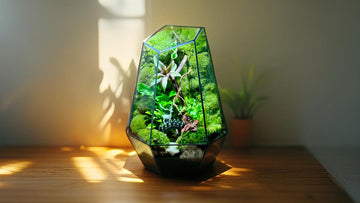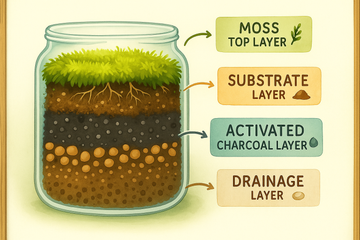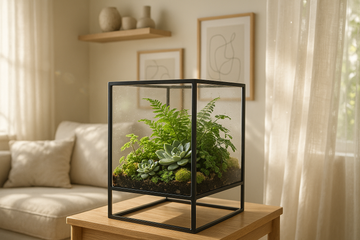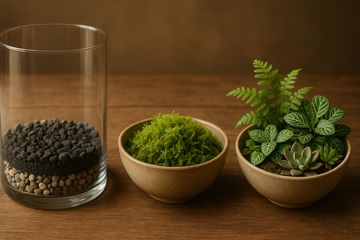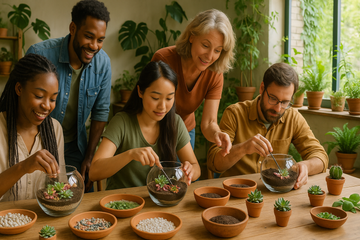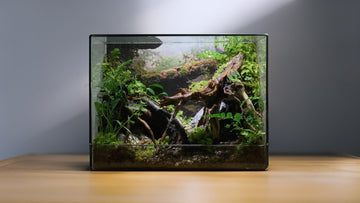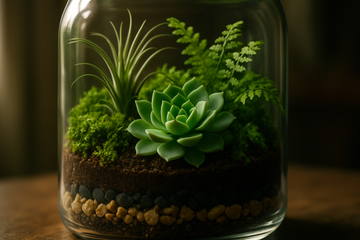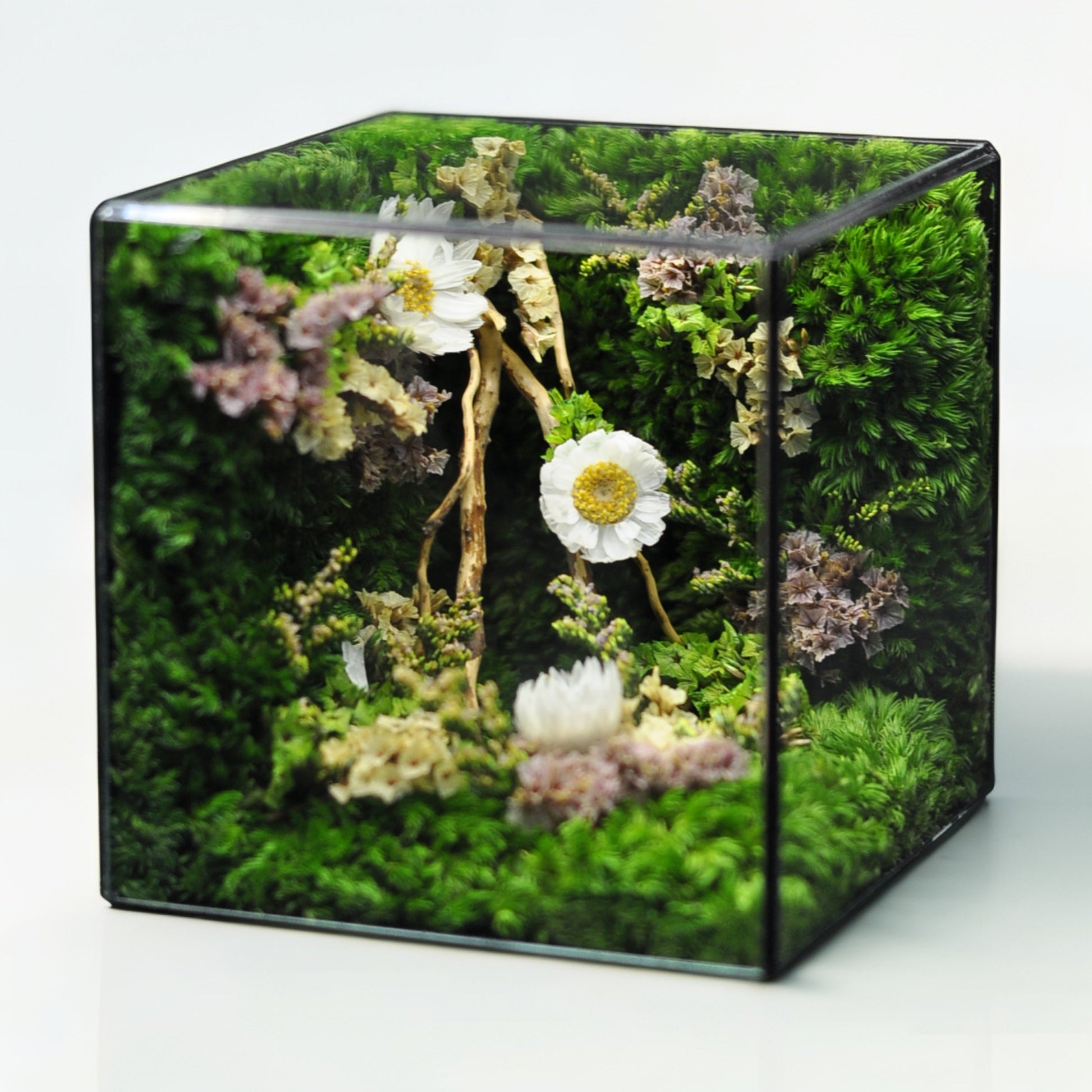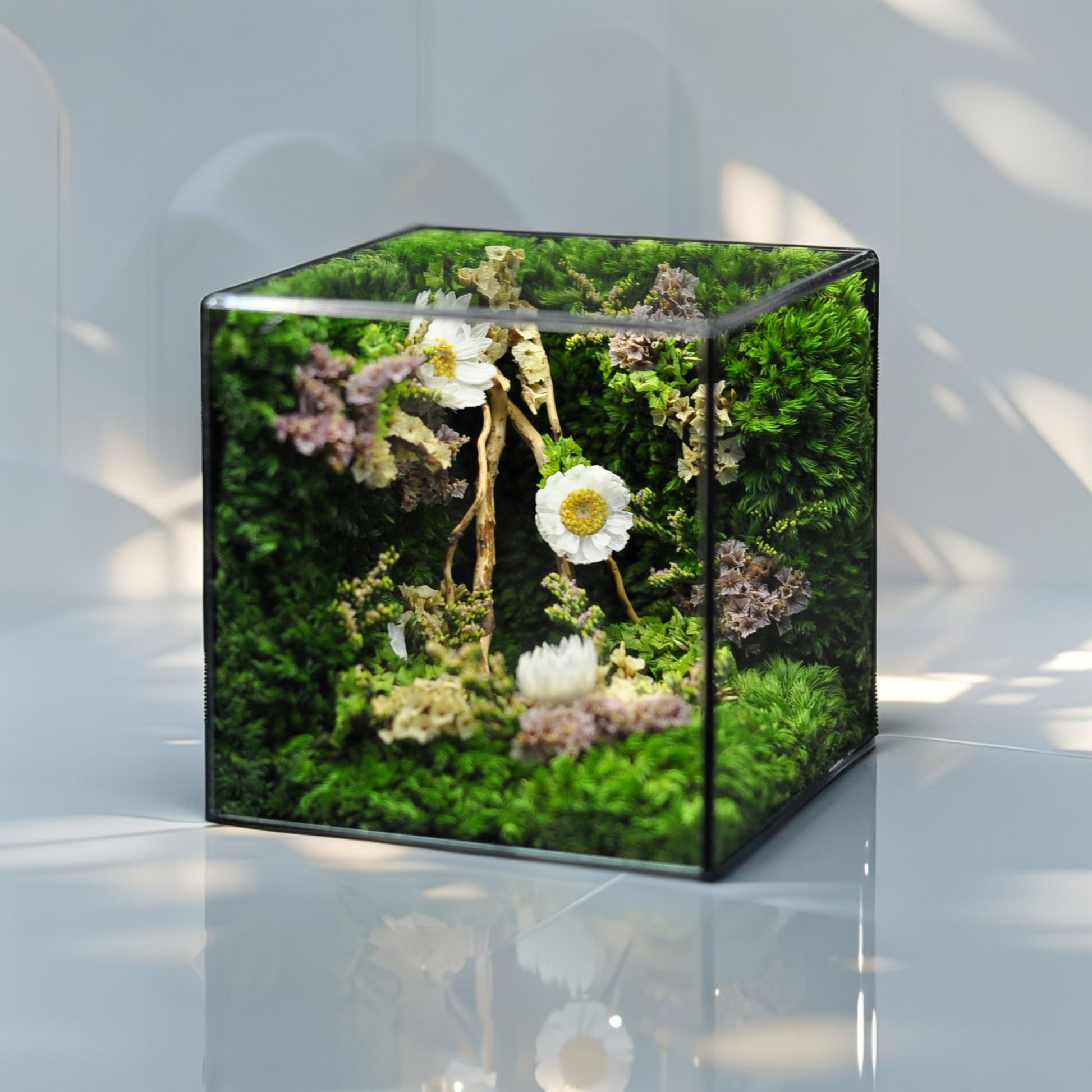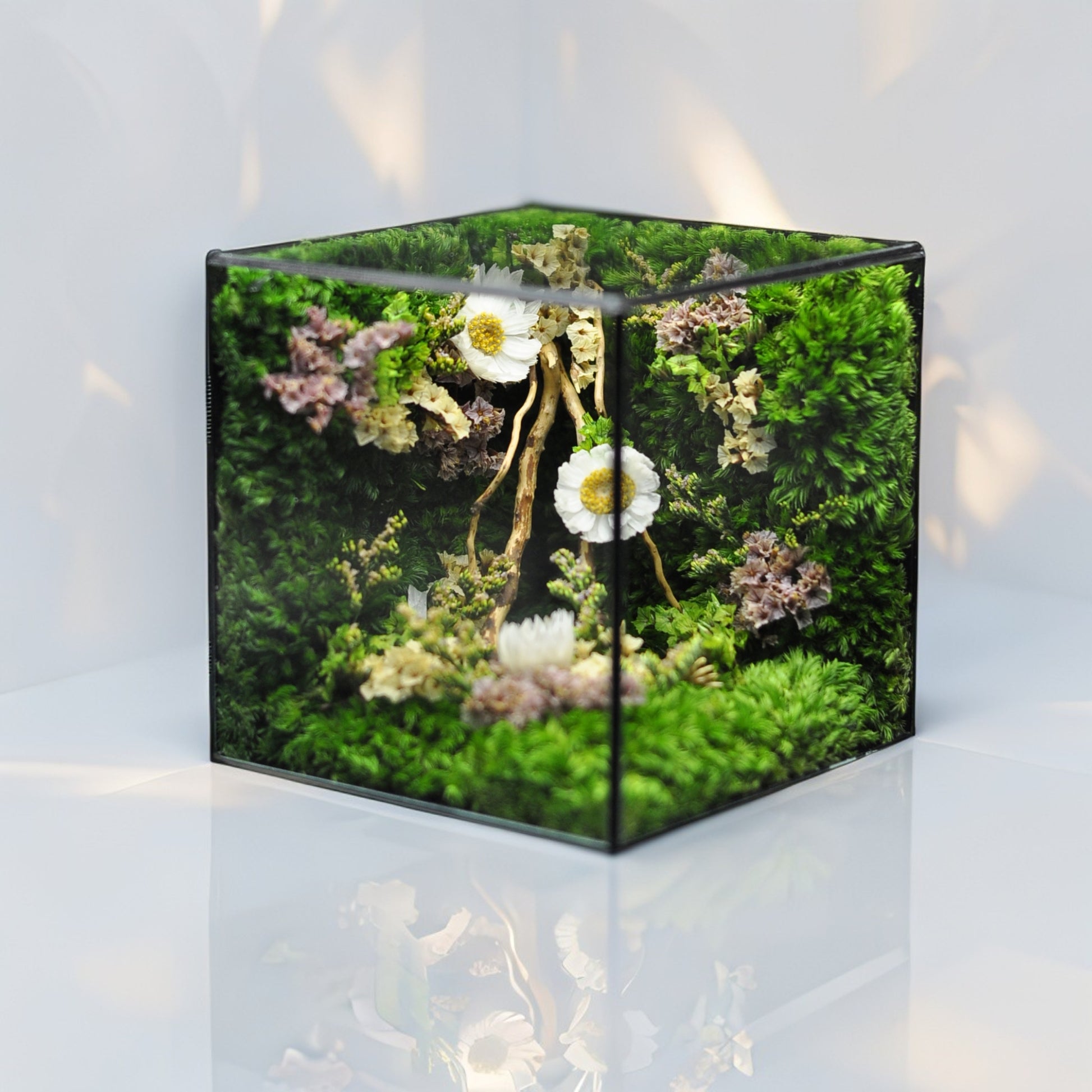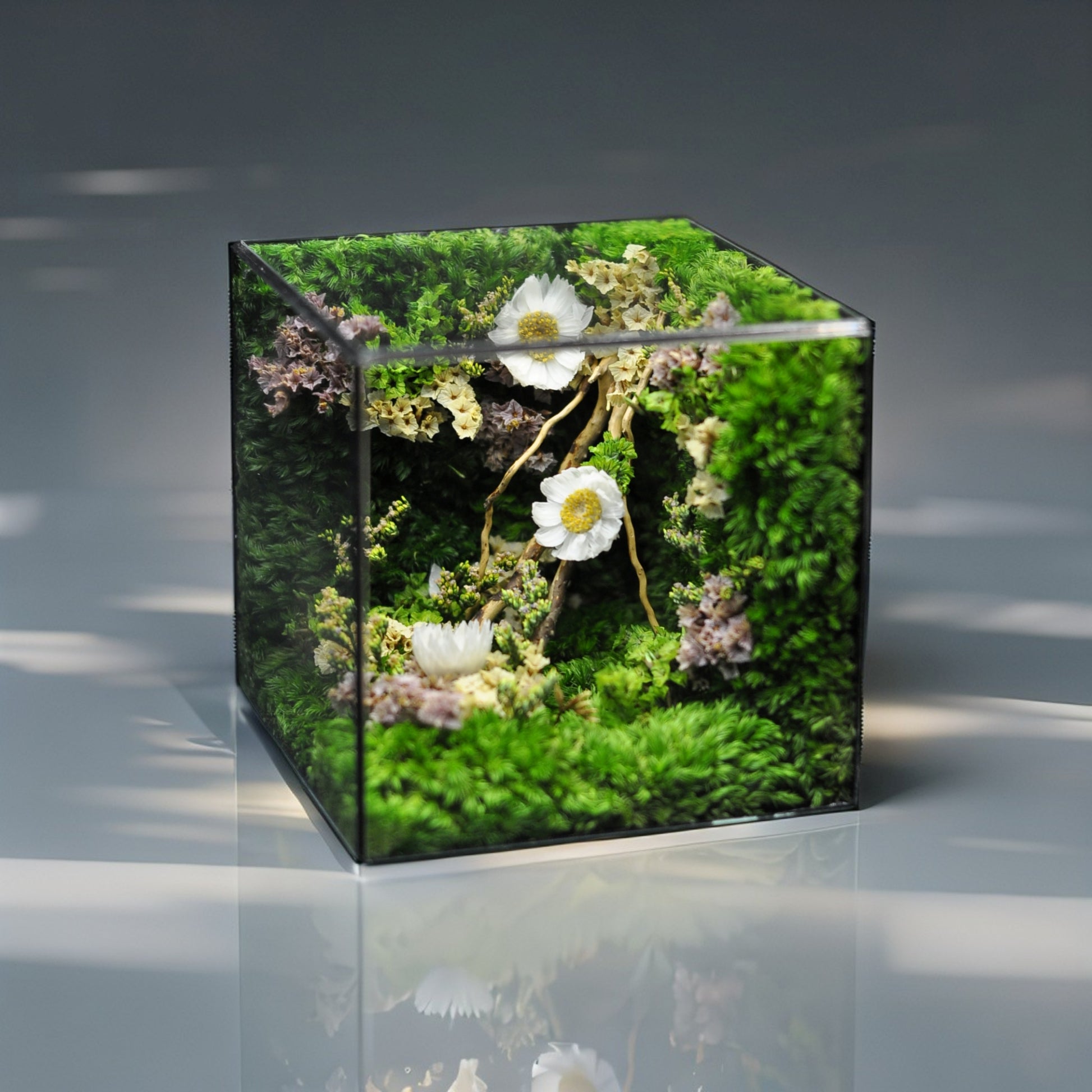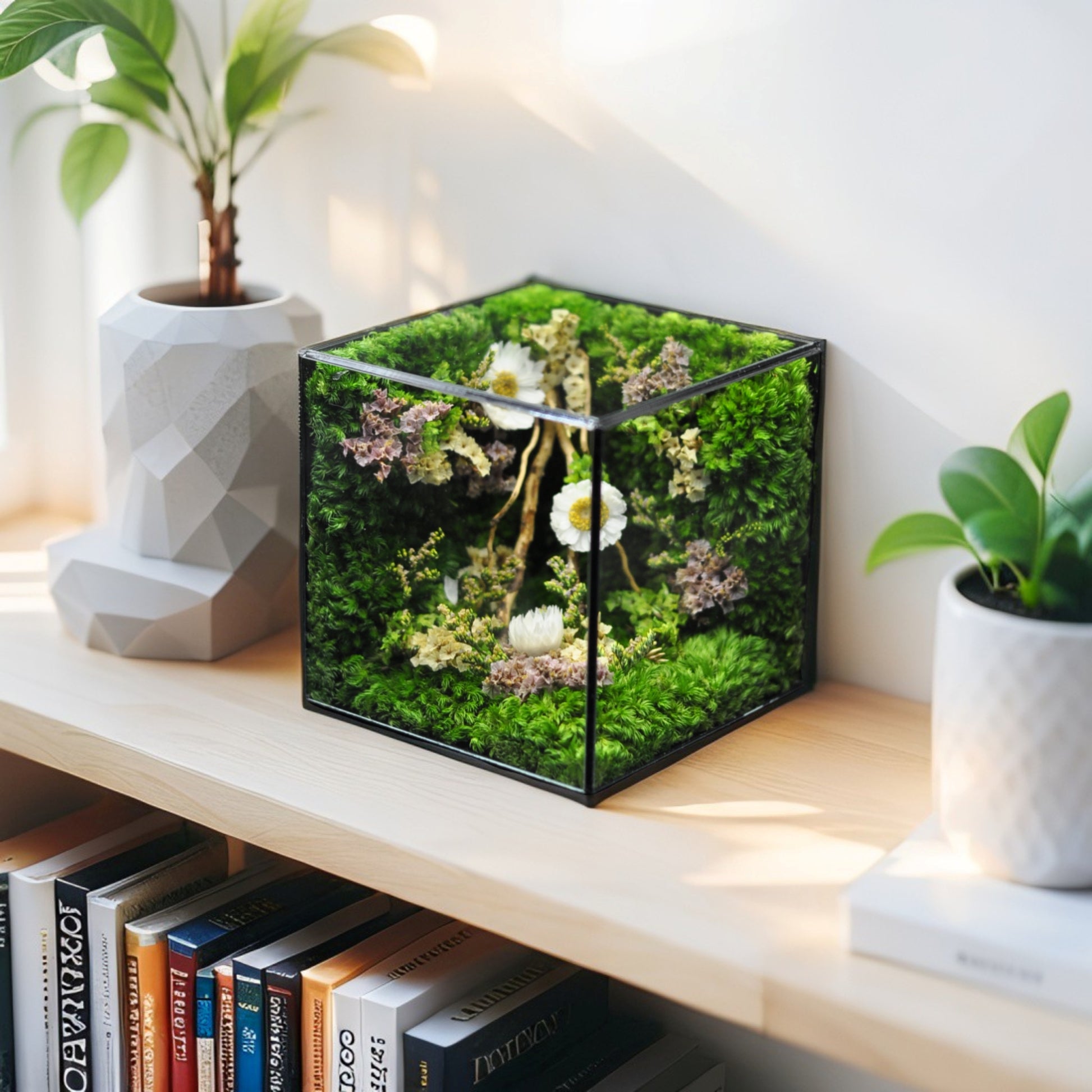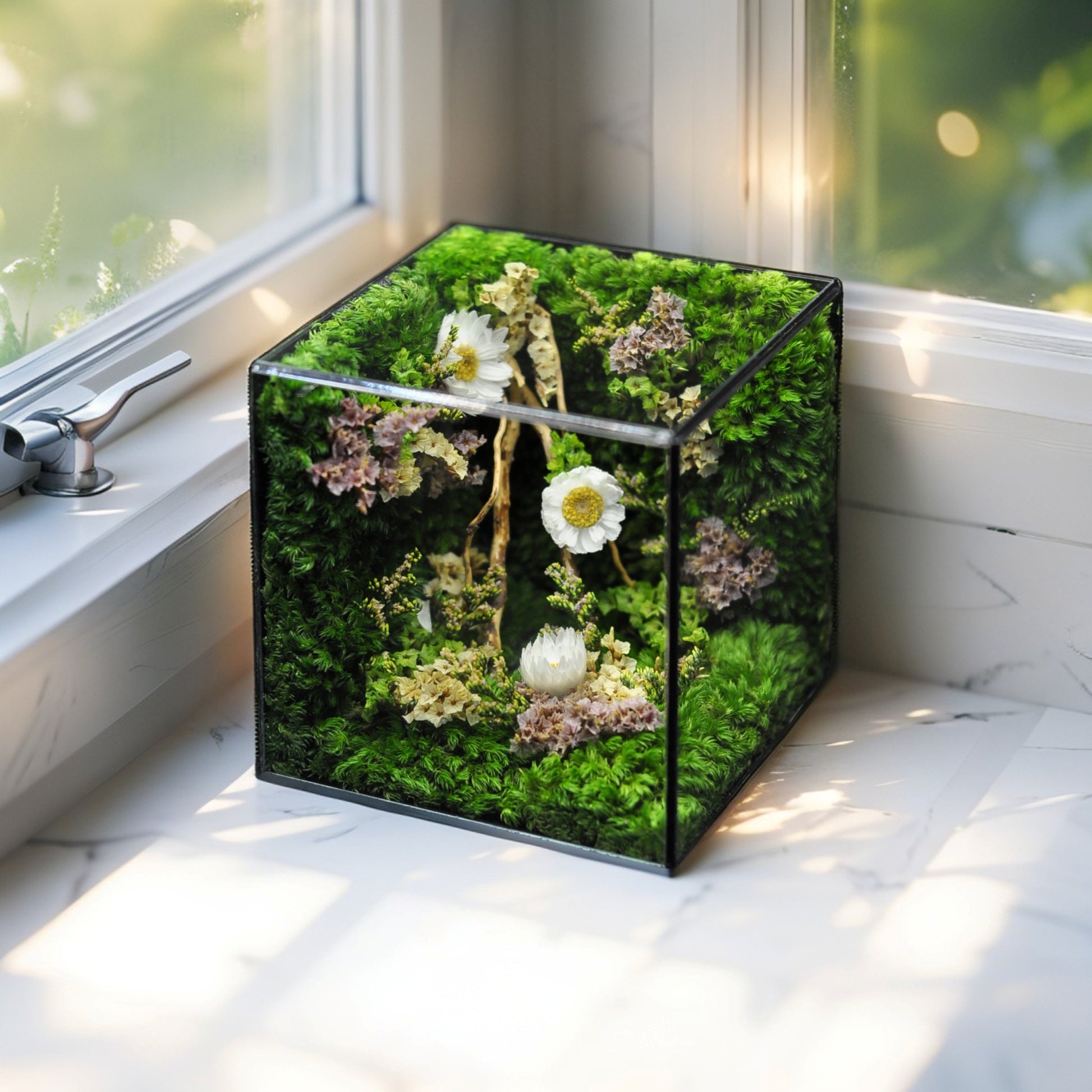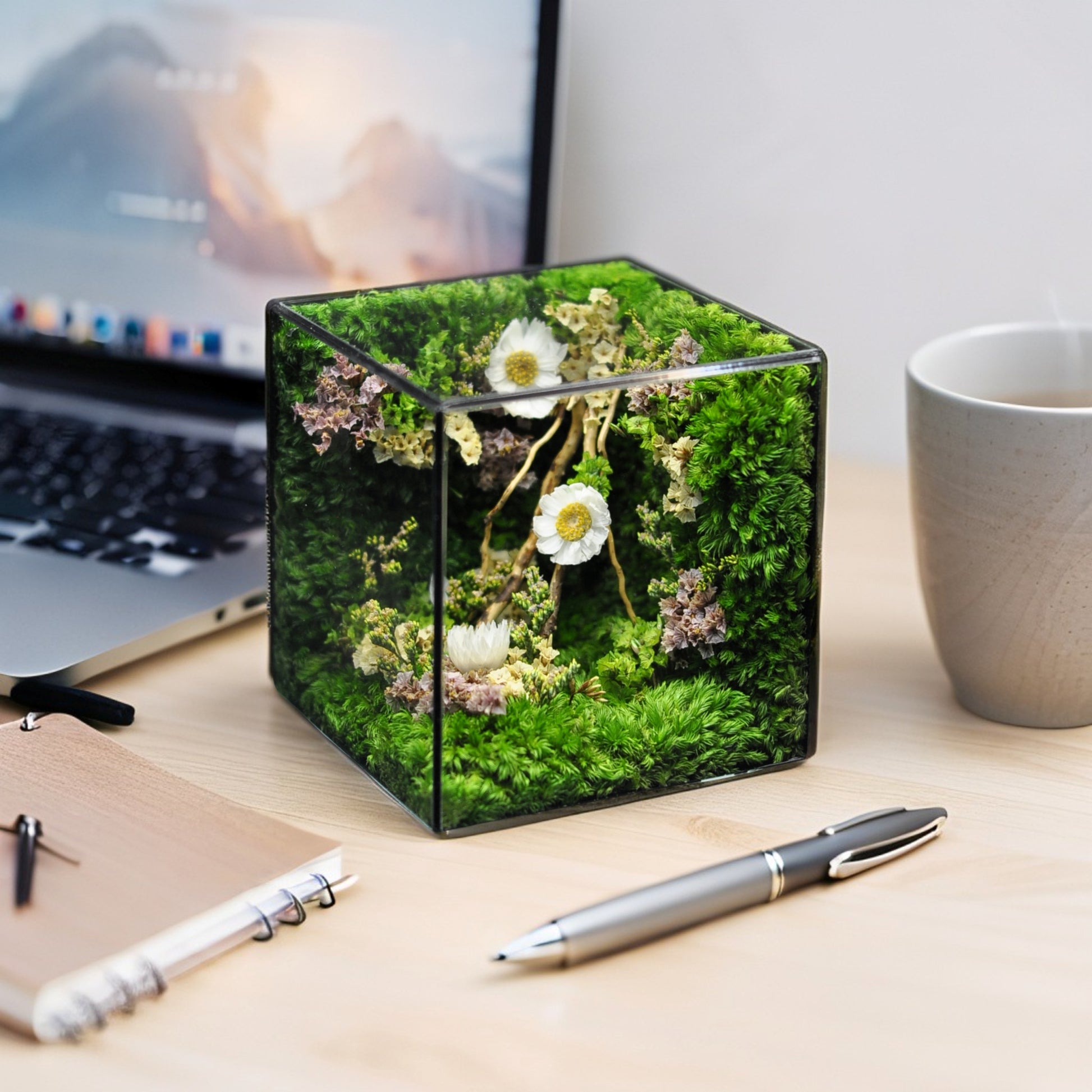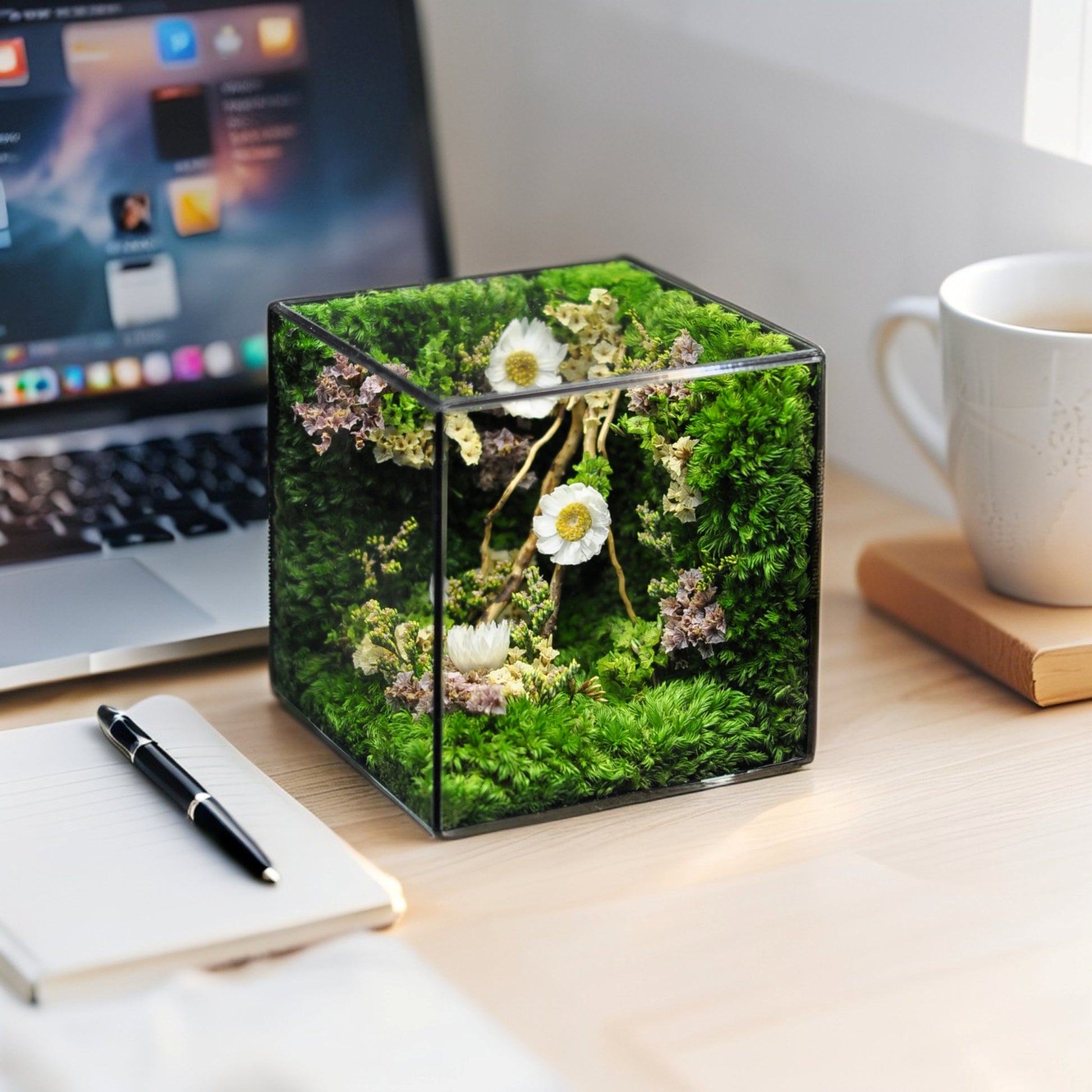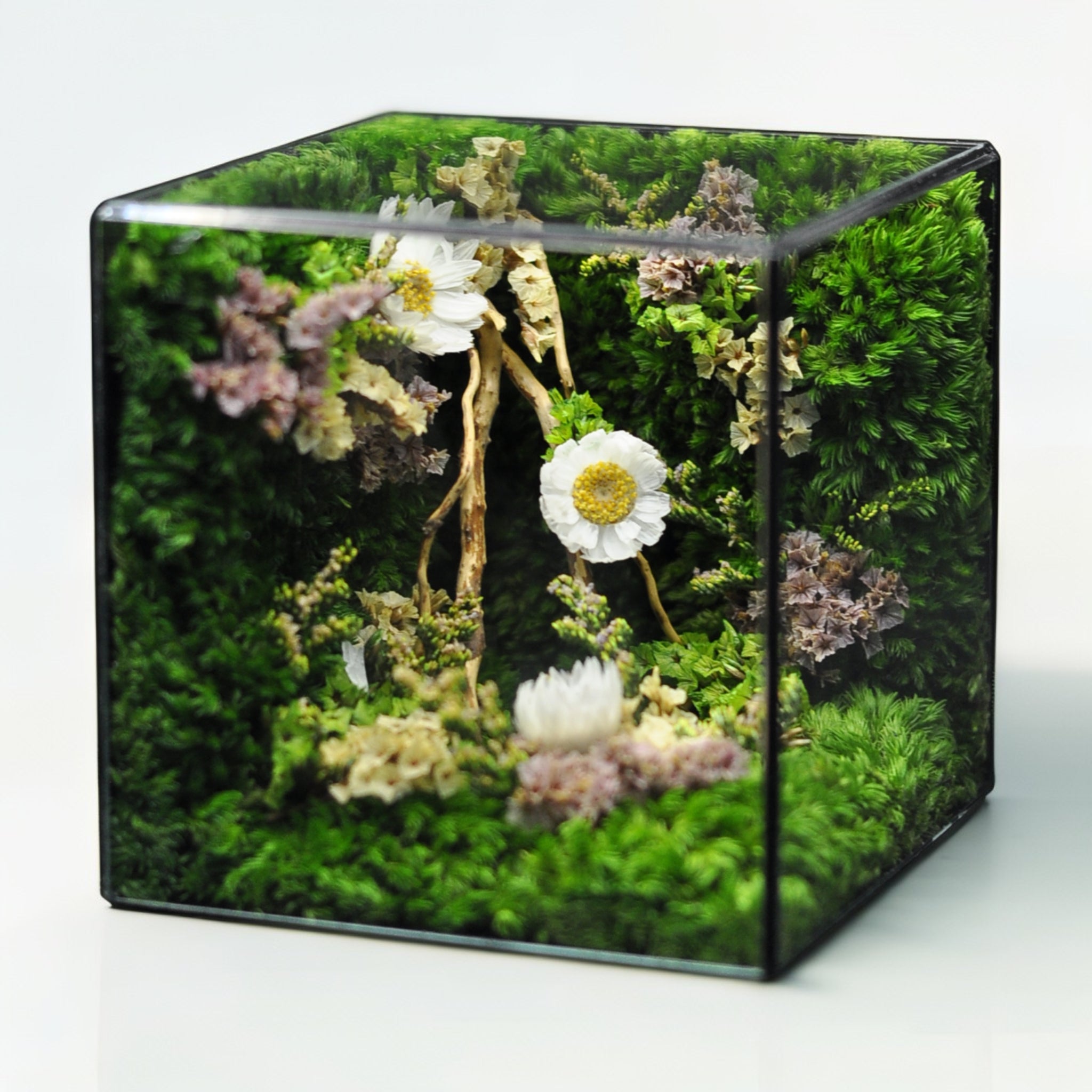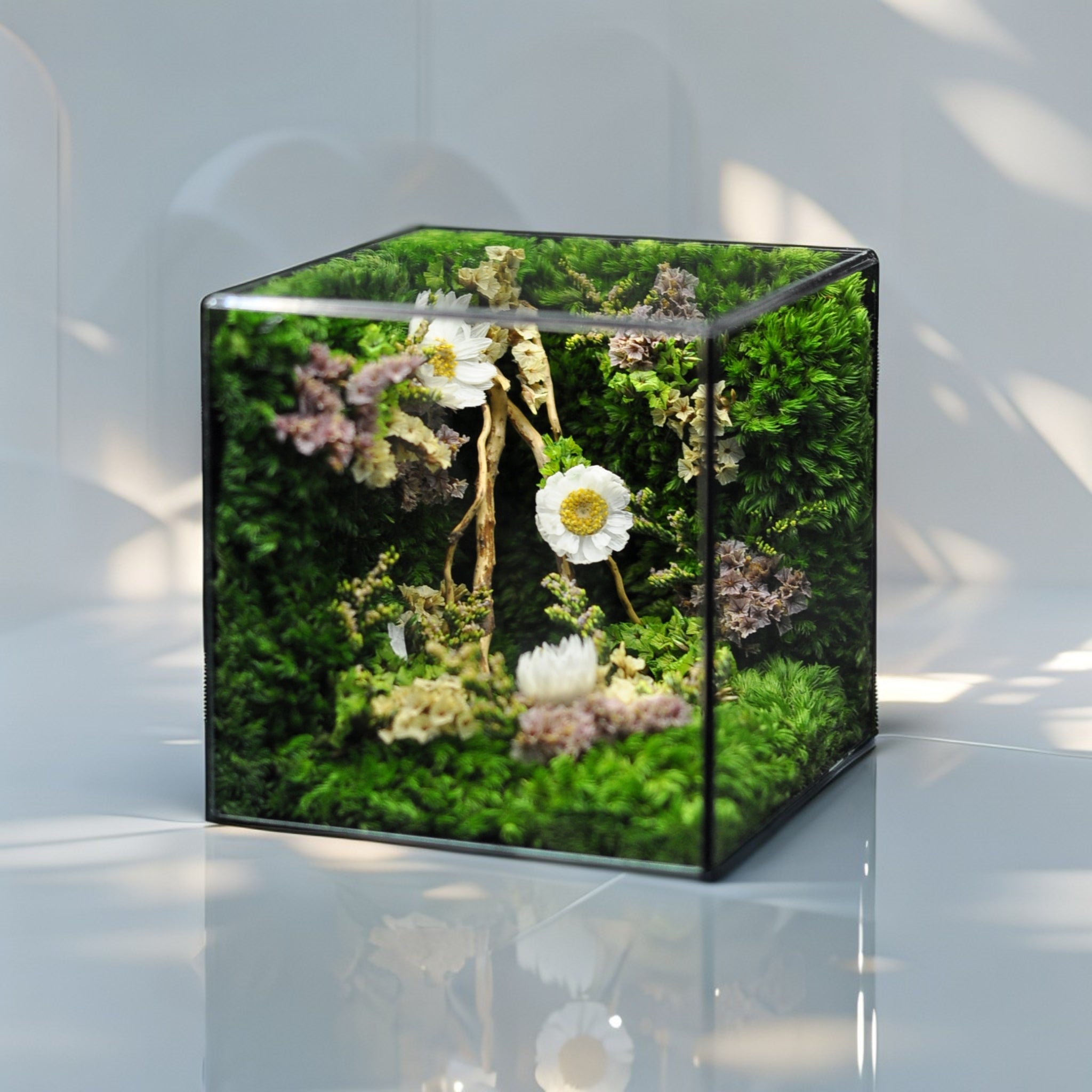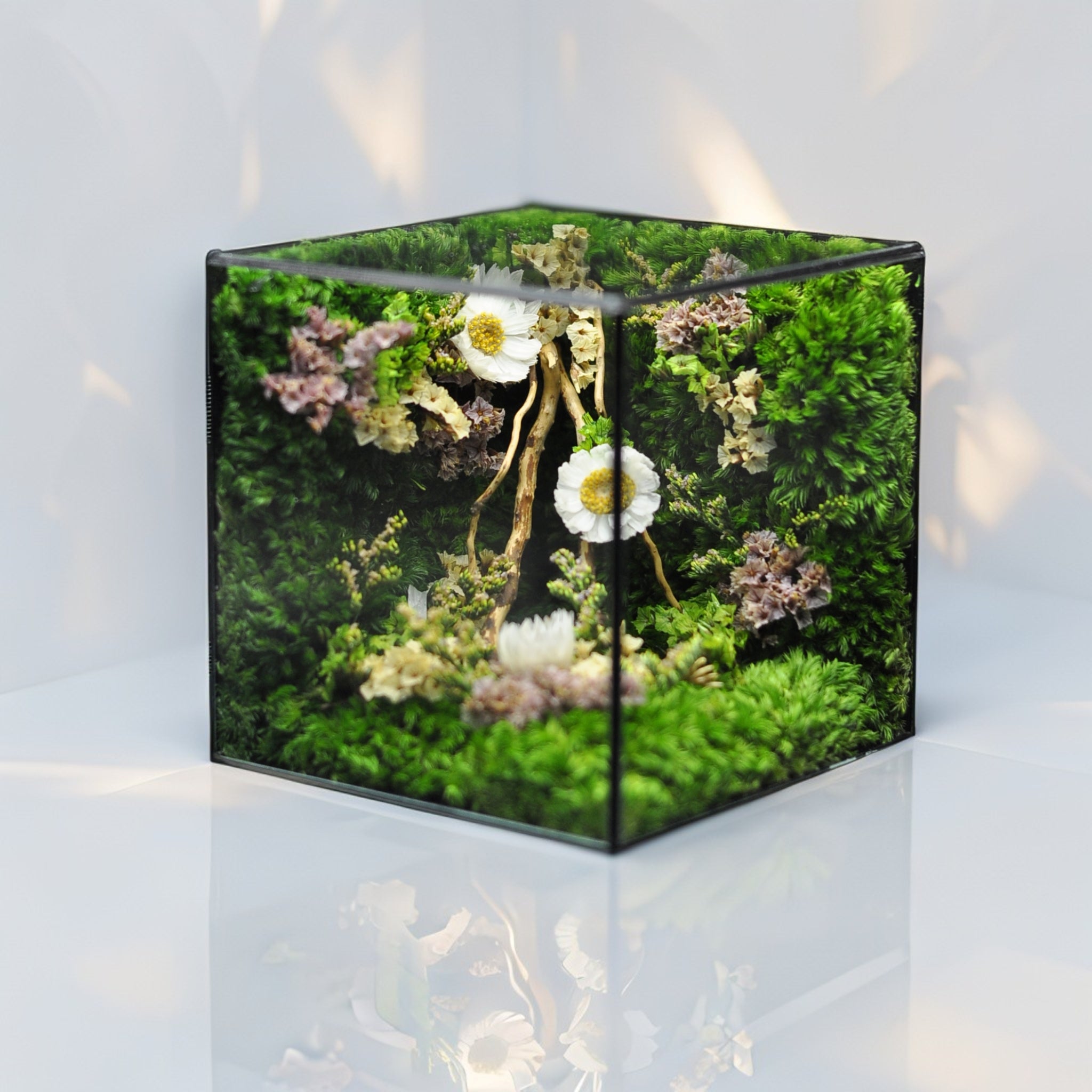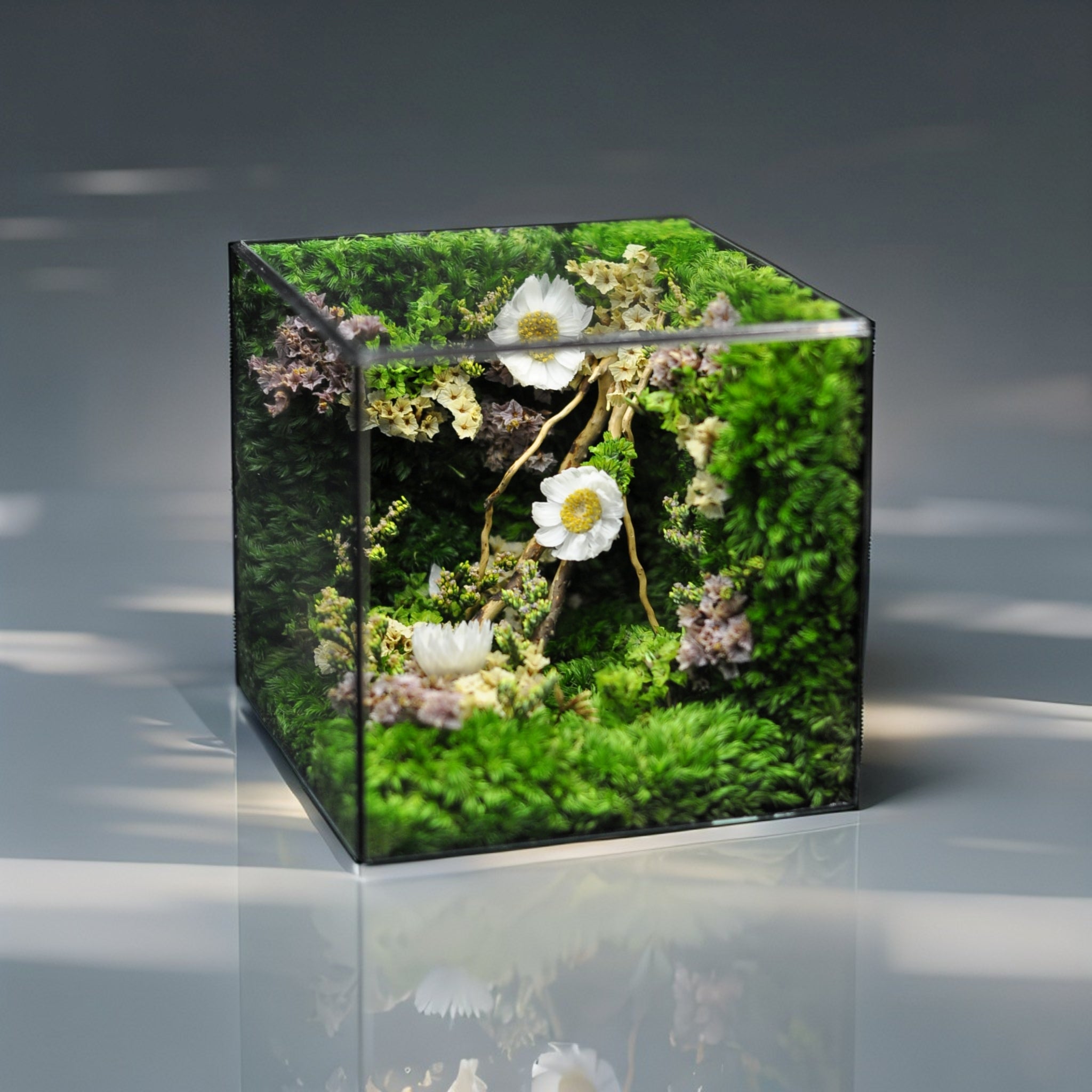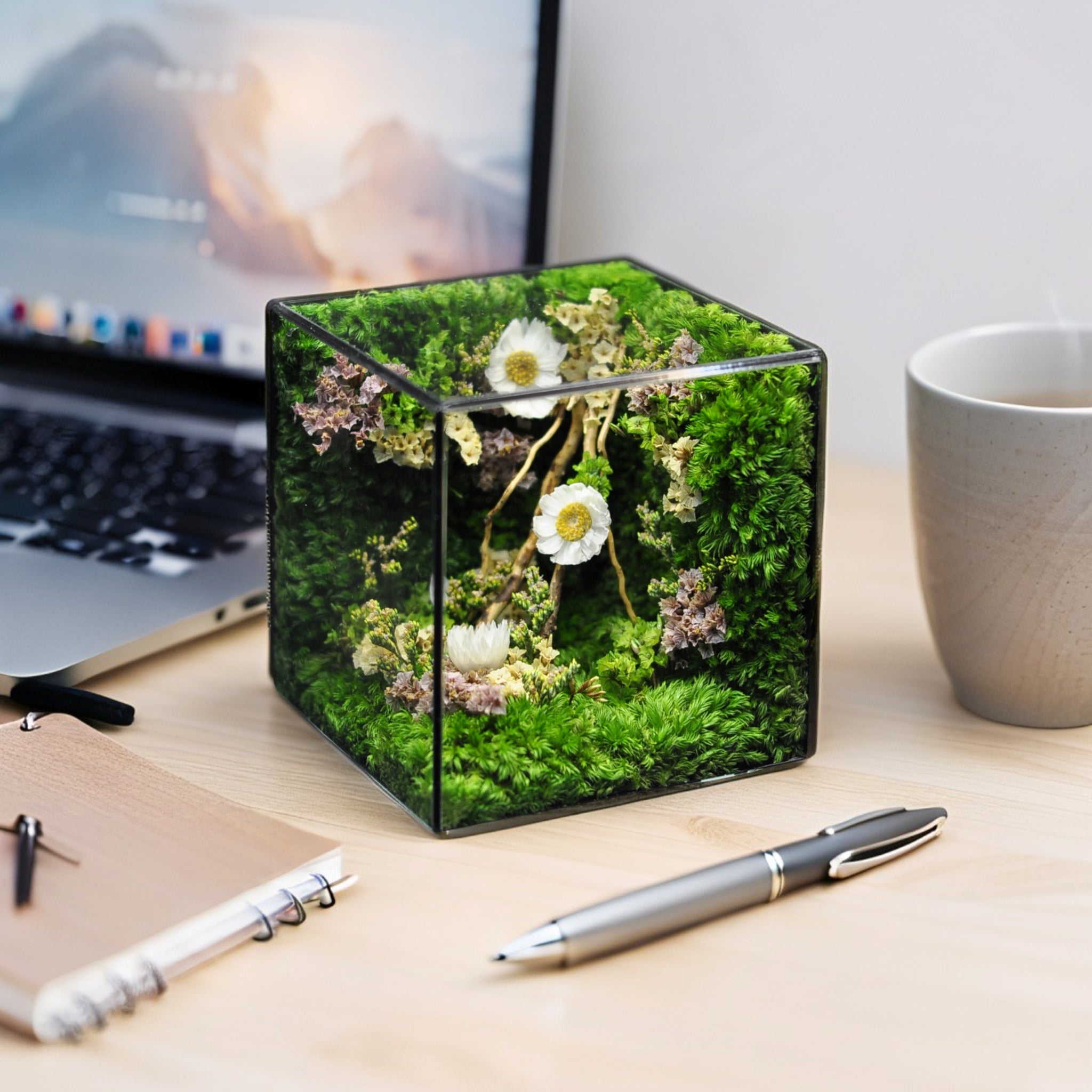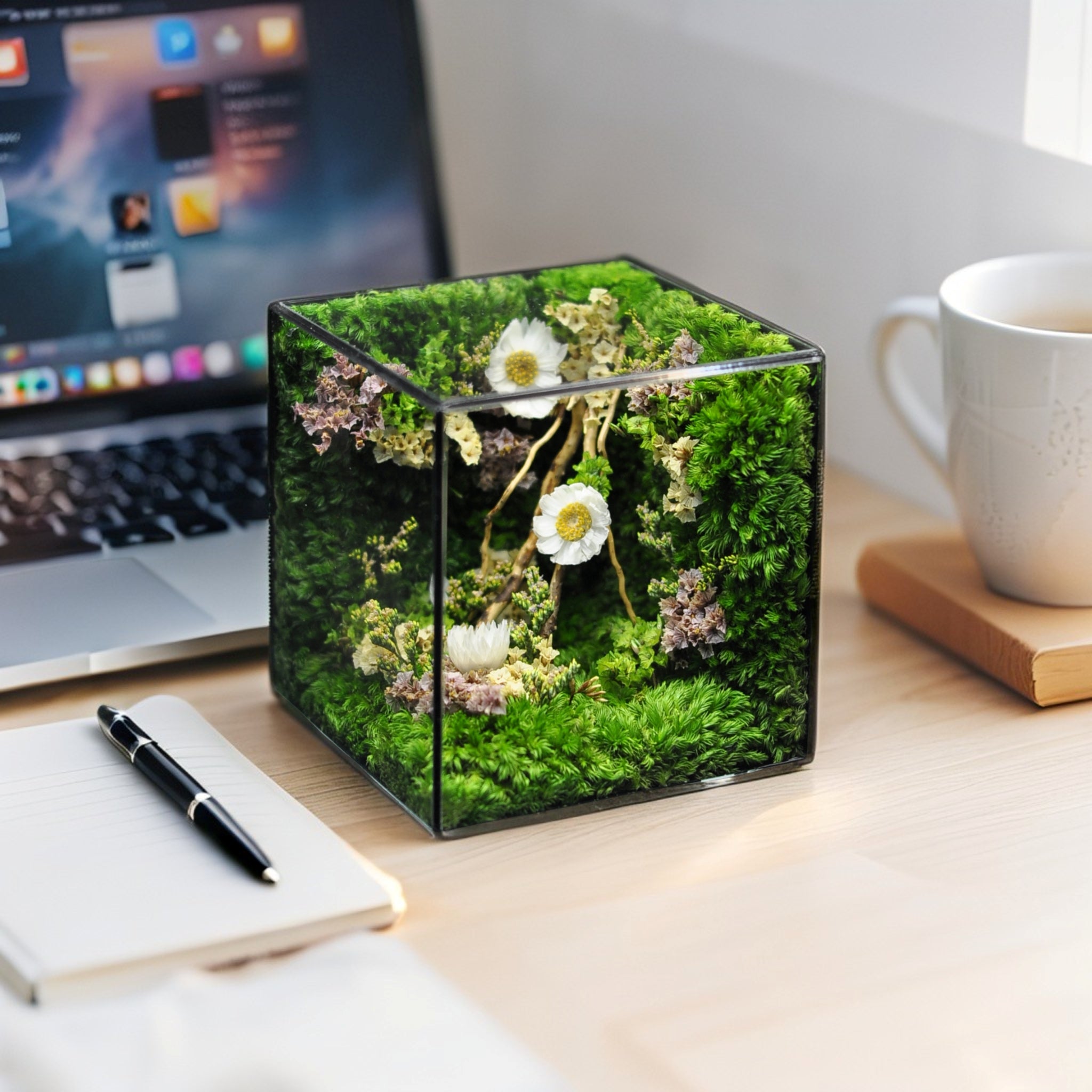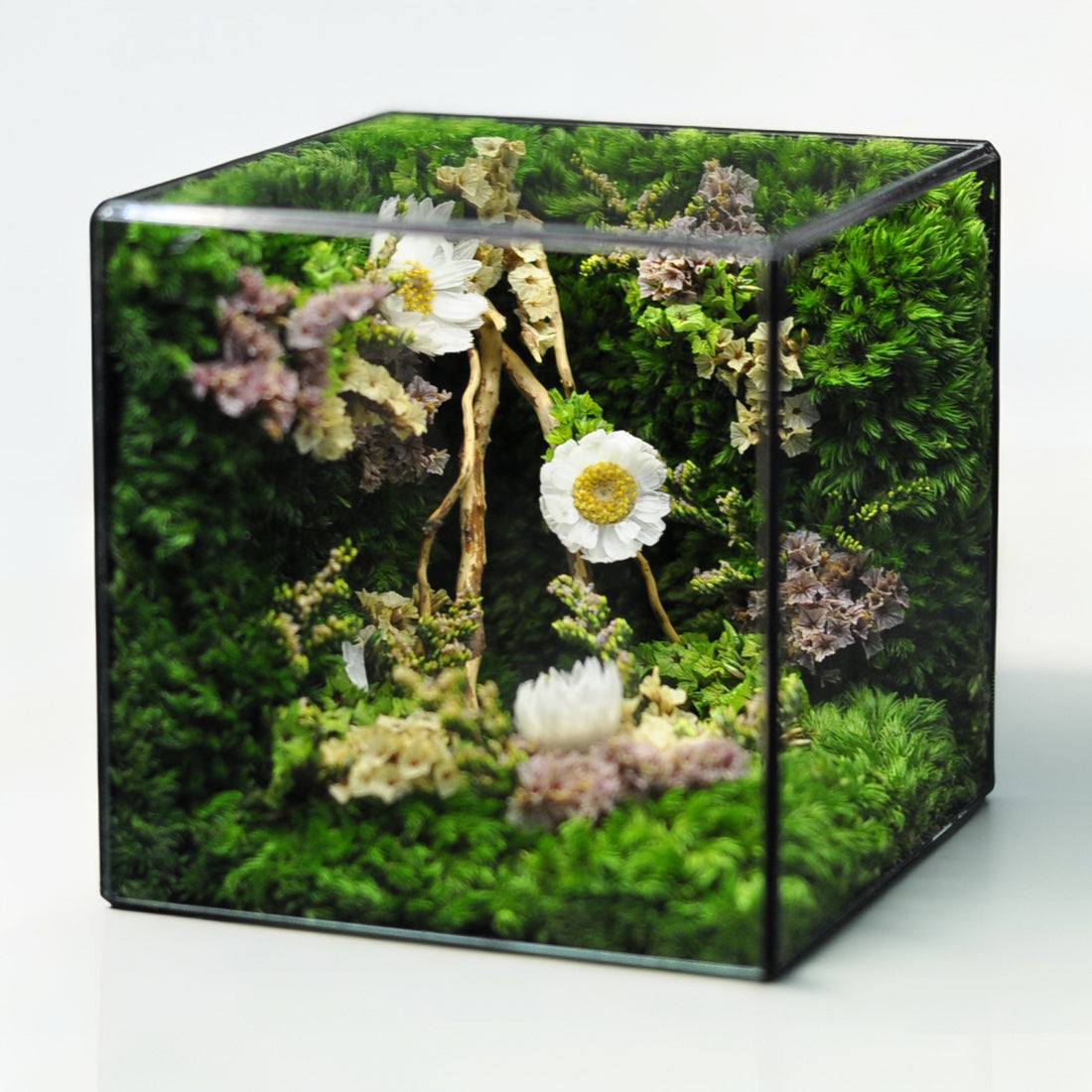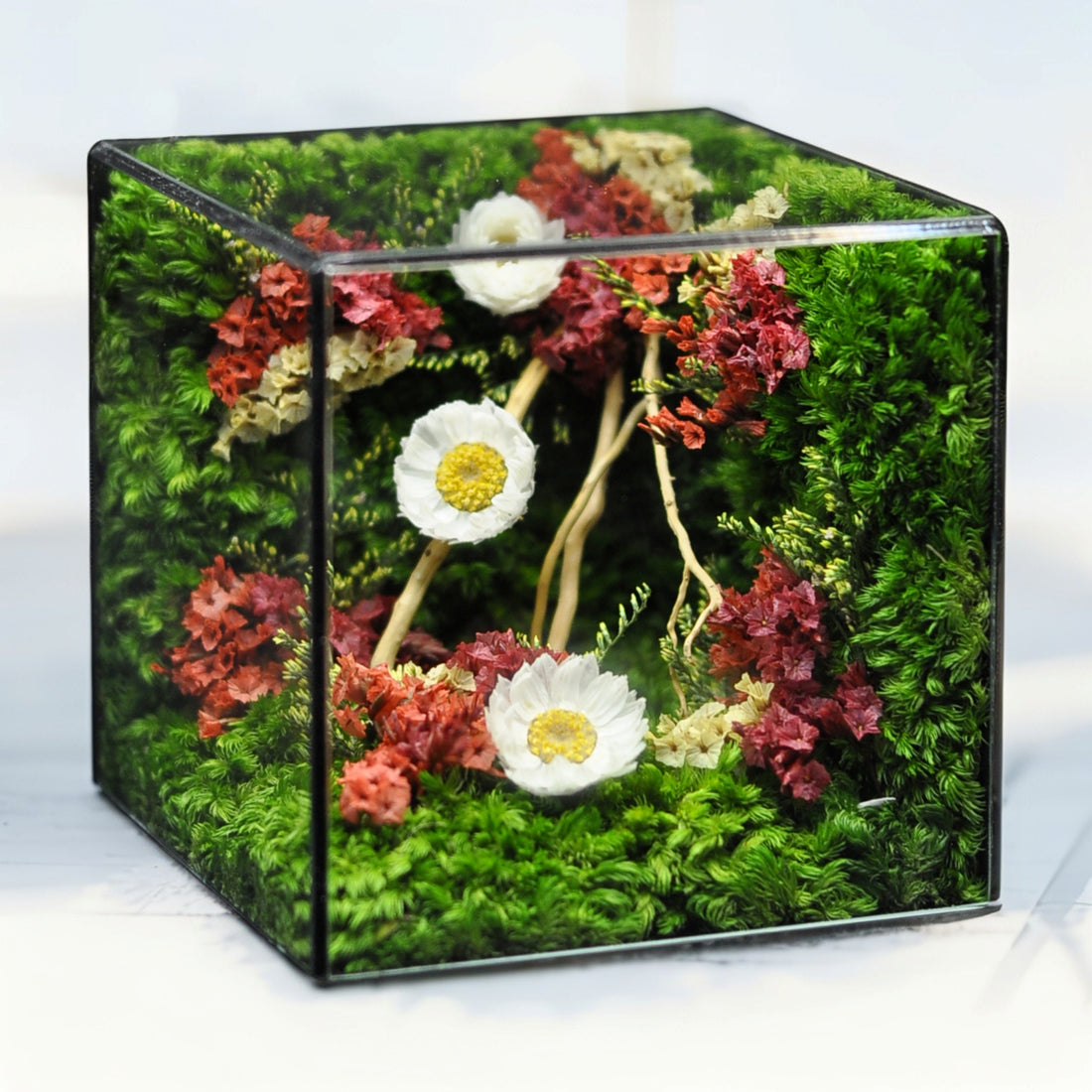Key Takeaways
Terrariums offer a delightful fusion of greenery and décor, whether you’re hands-on with a DIY build or prefer the convenience of a pre-assembled kit. Below are the essential takeaways from our guide to 20 creative terrarium ideas, blending step-by-step tutorials, curated shop-ready picks with price guidance, and expert styling and care tips.
- Ignite your creativity with 20 distinct themes: from desert-style succulents to verdant rainforest scenes, each concept combines unique plant pairings and décor accents to match any aesthetic.
- Pick the ideal container and décor to match your vision: explore geometric glass bowls, hanging planters, teacups, and decorative stones that enhance both style appeal and plant health.
- Layer like a pro for thriving microclimates: proper substrate sequencing—drainage rocks, activated charcoal, soil—and strategic plant placement ensure balanced moisture and air circulation for succulents, mosses, and tropical foliage.
- Follow clear DIY tutorials step-by-step: every idea includes concise materials lists and illustrated instructions to guide beginners and experienced crafters through assembly and planting.
- Streamline inspiration to purchase with curated kits: discover shop-ready terrarium bundles across a range of budgets, complete with direct purchase links and transparent price ranges for instant gratification.
- Maintain your terrarium effortlessly: expert tips on watering frequency, light requirements, humidity management, and pruning help your miniature ecosystem stay vibrant long-term.
- Elevate with personalized styling and seasonal touches: accessorize with mini figurines, colored sands, moss mats, and themed accents to reflect personal tastes or celebrate seasonal highlights.
Armed with these insights, you’re ready to explore each terrarium project with confidence—whether you’re crafting a custom creation or opting for a convenient kit. Dive into the full article for detailed tutorials, curated product picks, and styling hacks that bring your indoor garden visions to life.
Introduction
Imagine transforming your living space into a vibrant oasis with just a little creativity and a touch of nature. Terrariums aren’t just trendy decor; they’re a captivating blend of art and ecology that breathe life into any room while offering an engaging crafting experience.
Whether you're a seasoned DIY enthusiast or seeking the convenience of pre-made kits, this guide presents 20 unique terrarium ideas that cater to every style and skill level. Discover how to cultivate your own miniature ecosystems—from arid deserts to lush rainforests—complete with step-by-step tutorials, curated suggestions, and expert tips. Each concept not only showcases stunning plant pairings but also emphasizes effective care to keep your indoor garden flourishing.
Get ready to spark your imagination as we delve into these terrarium ideas, equipping you with the knowledge and inspiration to create a thriving green space that reflects your personal style.
20 Creative Terrarium Ideas to Elevate Your Indoor Garden
Imagine a sunbeam dancing through a crystal-clear globe, illuminating lush ferns or sculptural succulents below. Terrariums bring that microcosm of beauty into your home—combining design, horticulture, and a touch of whimsy. In this guide, you’ll explore container styles, plant pairings, design themes, step-by-step DIY builds, curated shop-ready kits, expert care tips, and seasonal styling ideas to inspire your next green project.
Container Types & Décor Styles
Best Container Shapes for Indoor Terrariums
Choosing the perfect vessel sets the stage for a thriving mini-ecosystem. Consider:
- Open glass bowls (fishbowl style): Exceptional airflow for succulents and cacti.
- Closed jars (apothecary or mason jars with lids): Trap humidity for tropical plants.
- Wide-mouthed vases: Simplify planting and pruning of larger specimens.
- Vintage lamps and cloches: Offer a museum-worthy focal point.
- Bottles and cylinders: Ideal for narrow layering or “bottle garden” displays.
Key considerations:
- Access: Wider openings make planting and upkeep a breeze.
- Microclimate: Closed vs. open vessels determine humidity levels.
- Aesthetics: Match your décor—modern, rustic, or eclectic.
Geometric Glass Bowls
Now that you’ve chosen your vessel, explore how geometric shapes add architectural flair. Tetrahedrons, pentagons, cubes, and prism-style bowls highlight plant silhouettes while refracting light for dynamic shadows. Many come framed in brass or matte-black metal for extra polish.
Hanging Glass Globes & Planters
Picture tiny orbs of green floating at eye level—perfect for tight corners or window displays. Air plants (Tillandsia), small ferns, and Marimo moss balls thrive in these suspended mini-gardens. Use leather straps, macramé hangers, or metal chains, and cluster globes at varying heights for maximum impact.
Vintage Teacups & Repurposed Containers
Upcycle found objects into conversation pieces.
- Teacups & saucers: Charming homes for single succulents or micro herb gardens.
- Tins, colanders, lanterns: Budget-friendly vessels with DIY flair—paint or decoupage to match your palette.
- Safety tip: If you cut glass bottles, always wear gloves and eye protection—or choose pre-cut terrarium bottles from craft suppliers.
Decorative Stones, Colored Sands & Mini Figurines
Add texture and personality with:
- Natural river stones, polished pebbles, or sea glass.
- Colored sands (pastels, metallics) for bold topdressing layers.
- Activated charcoal granules (decorative only) vs. filter-grade charcoal (substrate layer for odor control and filtration).
- Mini figurines—animals, gnomes, fairy doors—for whimsical charm.
Pro Tip: Use a small funnel and chopsticks to place accents without disturbing roots.
Plant Selection & Layering Techniques
Best Plants for Terrariums: Succulents, Mosses & Tropical Foliage
Choose flora that suit your container’s microclimate and desired look:
- Succulents & Cacti: Echeveria, Haworthia, Sedum—drought-tolerant with pH 6.0–7.0 soil. Air plants (Tillandsia) need no soil at all.
- Moss Terrariums: Sheet moss (Hypnum), cushion moss (Leucobryum)—perfect for closed jars maintaining constant moisture.
- Tropical Foliage: Fittonia (nerve plant), Pilea depressa, Baby’s tears (Soleirolia), mini ferns—prefer peat-based soil at pH 5.5–6.5.
Substrate Sequencing: Drainage Rocks, Filter-Grade Activated Charcoal & Soil
A well-layered foundation prevents root rot and balances moisture (Source: University of Florida IFAS). From bottom up:
- Drainage (1–2″): Pebbles or LECA (lightweight expanded clay aggregate)—LECA outperforms plain stones with superior porosity and reusability.
- Barrier: Mesh or landscaping fabric keeps substrate from washing into drainage.
- Filtration (½″): Filter-grade activated charcoal neutralizes odors and toxins.
- Substrate (2–3″):
- Succulent mix: Sandy, free-draining; amend with coarse sand or perlite.
- Tropical mix: Peat-rich with good moisture retention; amend with coco coir or orchid bark.
- Topdressing: Decorative sand, gravel, or moss mats for a finished look.
Strategic Plant Placement & Microclimate Management
- Height hierarchy: Taller specimens at the back or center, low-growers up front.
- Group by needs: Keep succulents together and tropicals in high-humidity clusters.
- Humidity & Light:
- Closed terrariums: 60–80% RH, ideal for tropicals.
- Open terrariums: 40–60% RH, best for succulents and air plants.
- Light: Aim for 3,000–5,000 lux of bright, indirect sunlight; supplement with LED grow lights (5 W, 6,500 K) if needed.
- Tools: A small hygrometer or soil moisture meter helps you dial in precise conditions.
Creative Terrarium Design Ideas & Themes
Ready to bring these elements together? Dive into ten unique themes—desert calm or woodland magic? Which style feels most you?
Desert Succulent Landscape
Build arid vistas with fine or colored sand, rosette succulents (Echeveria), trailing sedums, driftwood accents, and stone “boulders.” Use a shallow, open dish to mimic desert washes.
Lush Tropical Rainforest Mini-Ecosystem
Recreate Amazonian humidity in a lidded jar with Fittonia, moss mats, baby tears, cork bark, and small branches. Mist weekly to maintain that dew-fresh glow.
Geometric Succulent Arrangement
Pair a prism or hexagonal terrarium with succulents planted at complementary angles. Black sand or dark gravel enhances the sculptural effect.
Vintage Teacup Herb Garden
Drill a drainage hole or layer pebbles in a sturdy teacup. Grow thyme, oregano, or mint, and label with chalkboard paint or tiny stakes for easy identification.
Moss-Covered Forest Floor
Imagine a miniature woodland with sheet moss, bark pieces, acorn caps, and micro-LED lights for a soft, enchanted glow.
Fairy Garden with Miniature Accents
Channel childhood wonder with tiny houses, stepping stones, soft moss, and battery-powered fairy lights for nocturnal sparkle.
Air Plant in Hanging Glass Globe
No soil required—nestle Tillandsia in a clear globe on a bed of colored sand or pebbles. Hang near bright windows and mist 2–3 times weekly.
Seasonal Holiday Terrarium
Switch accents to celebrate: red sand and mini pine cones for Christmas; black sand and faux bones for Halloween; pastel sands and mini eggs for Easter.
Zen Sand & Stone Garden
Create a serene Japanese-inspired vignette with raked sand or fine gravel patterns, smooth river stones, and a single resilient bonsai sedum.
Recycled Bottle Terrarium
Transform narrow-necked bottles into layered landscapes. Decorate exteriors with twine or glass paint—and remember to wear safety gear or buy pre-cut vessels.
DIY Terrarium Ideas: Step-by-Step Tutorials
Materials & Tools Checklist
Essentials:
- Containers (bowls, jars, globes, teacups)
- Drainage media (pebbles or LECA), filter-grade charcoal, potting mix
- Plants (succulents, air plants, moss, tropical cuttings)
- Tools (tweezers, funnel, spray bottle, gloves)
Optional:
- Gardening scissors, paint or decals for customization
- Hygrometer, moisture meter
How to Make a DIY Succulent Terrarium
Estimated time: 15–20 minutes | Difficulty: Beginner
- Clean container; let dry.
- Add 1–2″ pebbles or LECA.
- Cover with mesh or coffee filter.
- Layer ½″ filter-grade charcoal.
- Add 2–3″ succulent potting mix.
- Arrange succulents 1–2″ apart.
- Topdress with decorative sand or pebbles.
- Lightly mist; place in bright, indirect light.
- Rotate weekly for even growth.
Pro Tip: A long funnel and chopsticks help you position plants precisely.
DIY Moss Terrarium Tutorial
Estimated time: 30–40 minutes | Difficulty: Intermediate
- In a closed jar, add 1″ pebbles and ½″ charcoal.
- Layer 1–2″ peat-based mix with perlite.
- Moisten until just damp.
- Press sheet moss onto soil; smooth with tweezers.
- Insert twigs and bark accents.
- Seal jar; if heavy condensation appears, remove lid for 1–2 hours.
DIY Tropical Rainforest Terrarium Tutorial
Estimated time: 30–45 minutes | Difficulty: Intermediate
- Choose a lidded container.
- Build drainage: 1″ pebbles + ½″ charcoal.
- Add 2–3″ peat-rich soil.
- Plant Fittonia, mini ferns, creeping Pilea.
- Layer moss around bases.
- Mist walls with distilled water; close lid.
DIY Hanging Globe Terrarium Tutorial
Estimated time: 10–15 minutes | Difficulty: Beginner
- Clean a 4–6″ glass globe.
- Add 1″ sand or fine gravel.
- Nestle an air plant; add moss if desired.
- Hang with leather cord or macramé near bright light.
- Mist 2–3 times weekly.
DIY Teacup Terrarium Tutorial
Estimated time: 20–25 minutes | Difficulty: Beginner
- Layer ½″ pebbles, ¼″ charcoal in a teacup.
- Add 1–1.5″ succulent or herb mix.
- Plant a small succulent or herb cutting.
- Decorate with miniature stones or figurines.
- Water sparingly; display in bright spot.
Troubleshooting Common DIY Challenges
- Overwatering: Remove lid, increase airflow, replace saturated soil.
- Mold & mildew: Scoop out affected areas; sprinkle cinnamon powder as a natural fungicide.
- Pests (aphids, gnats): Treat with insecticidal soap or neem oil; quarantine terrarium.
- Etiolation (stretching): Provide more indirect light or rotate regularly.
- Soil compaction: Gently loosen with a skewer.
Q: Can I include live décor like snail shells?
A: Sterilize shells thoroughly; avoid live animals that can upset humidity levels.
Curated Shop-Ready Terrarium Kits: Where to Buy
These hand-picked kits bridge inspiration and hassle-free setup—ideal for gift buyers or time-pressed hobbyists.
Editor’s Top 3 Picks:
- Premium Geometric Terrarium Kit (Difficulty: Easy | $60–80) – Brass‐frame planter, curated succulents, substrate layers, decorative sand. Link to Bloomscape geometric terrarium kit
- All-Inclusive Tropical Terrarium Kit (Difficulty: Medium | $70–90) – Lidded glass container, rainforest plant mix, eco-substrate, spray bottle, care guide. Link to The Sill tropical terrarium kit
- DIY-Style Subscription Terrarium Kit (Difficulty: Varies | $35–45/month) – Monthly box with seasonal plants, container, décor, tutorials. Link to Cratejoy subscription
Best Budget Succulent Terrarium Kit
Price: $25–35 | Includes: 4″ glass bowl, mixed pebbles, charcoal, three succulents, soil pouch, tweezers. Link to Etsy succulent terrarium kit
Compact Moss Terrarium Kit
Price: $45–55 | Features: Cube jar, sheet moss, tropical cuttings, decorative bark, humidity gauge. Link to UncommonGoods moss kit
Fairy Garden Embellished Kit
Price: $30–50 | Comes with: Glass bowl, fairy figurines, micro accents, low-light plants. Link to Terrain fairy garden kit
Hanging Air Plant Terrarium Kit
Price: $20–30 | Includes: Three glass globes, leather hangers, six Tillandsia, decorative sand, care instructions. Link to Amazon hanging air plant kit
Vintage Teacup Terrarium Kit
Price: $25–40 | Features: Two ceramic teacups, drainage pebbles, mini succulents or herbs, styling decals. Link to Anthropologie teacup kit
Exotic Coffee Table Terrarium Kit
Price: $100–120 | Deluxe: Driftwood bowl, mixed succulents & epiphytes, premium substrate, decorative crystals. Link to West Elm coffee table kit
Seasonal Décor Terrarium Kit
Price: $40–60 | Rotating themes with holiday lights, themed sands, figurines. Link to Pottery Barn seasonal kit
Expert Care & Maintenance Tips
Watering Frequency & Techniques
- Succulent (open): Water every 2–3 weeks; bottom-water to avoid leaf spots (Source: Succulent Guide).
- Tropical (closed): Mist once weekly; monitor condensation levels.
- Air plants: Soak 20 minutes every 1–2 weeks; shake off excess water.
Optimal Light & Humidity Requirements
- Light: 3,000–5,000 lux of bright, indirect sun; east- or north-facing windows ideal.
- Humidity: Closed jars at 60–80% RH; open bowls at 40–60% RH (Source: Royal Horticultural Society).
- In darker rooms, supplement with a 5 W, 6,500 K LED grow light.
Pruning, Cleaning & Plant Health Monitoring
- Prune overgrowth with sterilized scissors to maintain shape.
- Wipe glass inside/out to remove algae

